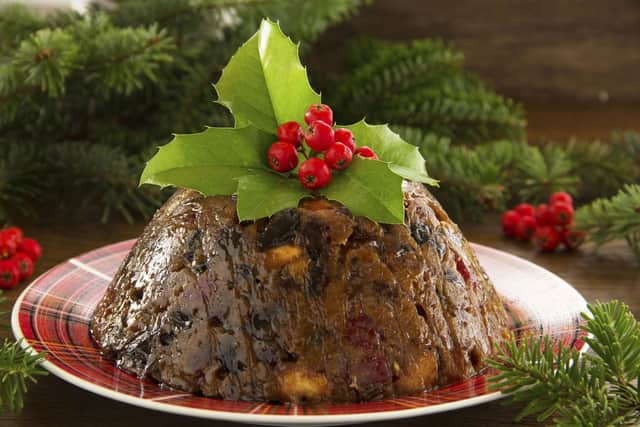Tis the season for Stir Up Sunday, time to get Christmas pudding ready
and live on Freeview channel 276
It harks back to Victorian times when families would gather together and take turns in stirring the pudding. The opening words of the Book of Common Prayer read “Stir up, we beseech thee, O Lord”. Christmas pudding would traditionally comprise of 13 ingredients to represent Jesus and the 12 disciples. When a family stirred they did it in an east to west direction to remember the wise men who visited Jesus in the nativity story. Coins are added to bring luck especially if you found them in your share on Christmas Day.
The first published reference to this rich, fruity confection was in Anthony Trollope’s novel, Doctor Thorne, written in 1858. But the tradition goes back hundreds of years. In the middle ages a Christmas porridge called “Frumenty” was popular and a savoury precursor to the sweet, rich pudding we enjoy today.
Advertisement
Advertisement
This year I’m going to treat myself by not making Christmas pudding and buying one instead. Amanda Hanna who runs Jam at the Doorstep has won Great Taste Awards for her puddings so I’m going to let her do the hard work this year while I take a breather. Instead of stirring up a traditional pudding tomorrow, I’m going to use my muscles making homemade mincemeat. The recipe I use is different to shop-bought in that I use grated cold butter instead of suet, making it vegetarian to boot. It also omits the addition of candied peel – the work of dark forces that adds nothing to the taste of anything. Mince pies straight from the oven are delicious, especially with a wee toot of custard. In the recipe here the two are combined – some custard is added to the pastry shell, topped with mincemeat and then a pastry star before being baked. Perfectly self contained.


Panforte is a traditional Italian Christmas confection that originates in the province of Siena in Tuscany but is widely eaten throughout the country. It translates as “strong bread”, referring to its spiced flavour. Dried fruit, toasted nuts, honey and spices are combined and pressed into a baking tin. It’s dusted with icing sugar and cut into wedges when cool. The resulting cake is quite dense and lovely with some coffee after dinner. Store in a cake tin until Christmas Day for a taste of Italy wherever you are.